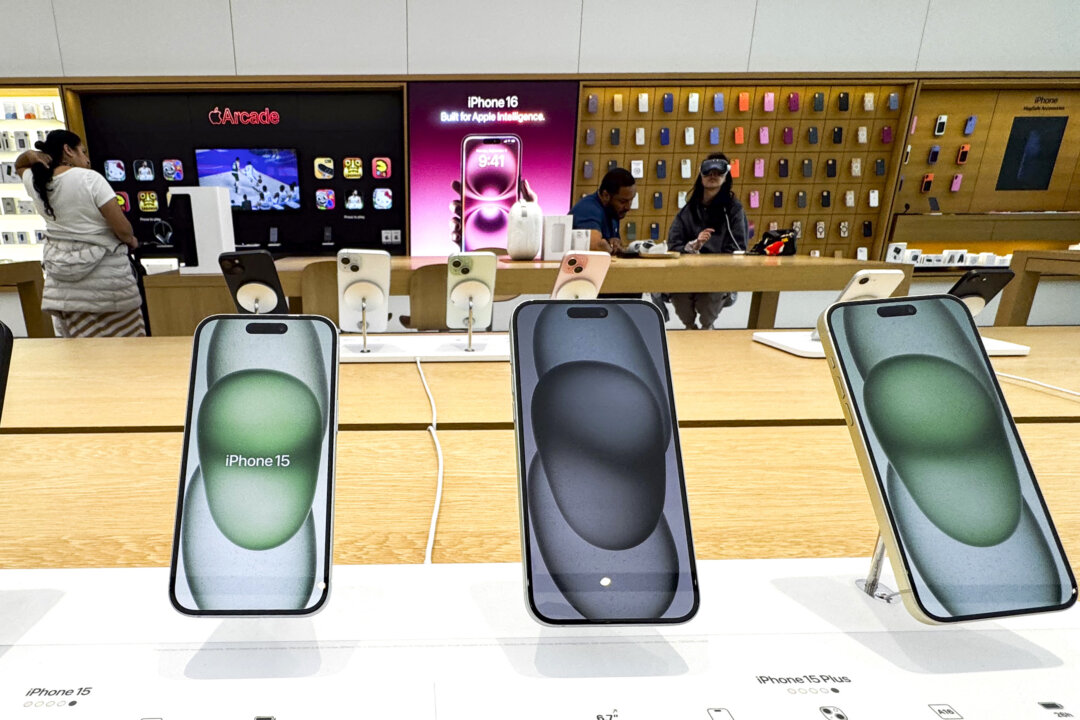‘This is not a permanent sort of exemption. [The president is] just clarifying that these are not available to be negotiated away by countries,’ he said.
Commerce Secretary Howard Lutnick said on April 13 that some electronics, including smartphones and computers, will fall under separate tariff plans that include semiconductors, which may be announced in a month or so.
Lutnick spoke with ABC’s “This Week” on April 13, two days after President Donald Trump exempted a range of electronic product imports from his recent reciprocal tariffs on numerous trade partners with the United States.
The items excluded from reciprocal tariffs include smartphones, computers, servers, laptops, tablets, motherboards, processors, memory modules, machines used for manufacturing semiconductor devices, integrated circuits, flat panel displays, and related devices, according to updated guidance from Customs and Border Protection published on April 11.
Lutnick told ABC’s Jonathan Karl that Trump’s announcement on April 11 only exempted those items from reciprocal tariffs.
“But they’re included in the semiconductor tariffs, which are coming in probably a month or two,” Lutnick said.
Speaking with NBC’s “Meet the Press” on April 13, White House senior counselor and trade adviser Peter Navarro said the tariffs will be determined through an investigation of the chips supply chain, launched under Section 232 of the Trade Expansion Act of 1962.
That act allows the president to restrict imports considered a threat to national security. The copper and timber industries have already seen Section 232 investigations by Trump over the past two months, and the president used the results of one 232 investigation from his first term to defend increasing aluminum and steel tariffs in March.
After Trump’s early April announcement of universal 10 percent tariffs on every U.S. trade partner, along with separate reciprocal tariffs for some, global and domestic stock markets underwent turbulence. The president then paused almost all his tariffs for 90 days after declaring that he is brokering trade deals with numerous partners, while raising tariffs on Chinese imports to 145 percent.
After the S&P 500 initially dropped on the April 2 tariff plan unveiling, the index rose 9.5 percent—its highest single-gain day since October 2008—on April 9 after Trump announced his 90-day pause on most tariffs. The index, however, was still 11.2 percent below a recent high in February.
While many of the president’s tariffs are open to negotiation, Lutnick emphasized that semiconductor-based technology products were exempted on April 11 precisely because they’re non-negotiable.
“So this is not a permanent sort of exemption,” he said. “[Trump is] just clarifying that these are not available to be negotiated away by countries.”
Lutnick said tariffs on semiconductors and pharmaceuticals are necessary to incentivize the reshoring of their production back to the United States.
“We need our medicines, and we need semiconductors and our electronics to be built in America,” he said.
“We can’t be beholden and rely upon foreign countries for fundamental things that we need. We can’t be relying on China for fundamental things that we need.”
Previously, the Biden administration had levied targeted tariffs on semiconductors, particularly from China, as a means of “supporting investments and creating good jobs in key sectors that are vital for America’s economic future and national security,” according to a May 2024 fact sheet from the Commerce Department.
President Joe Biden at the time pushed for semiconductor manufacturing to return to the United States, championing the CHIPS and Science Act of 2022, which invested nearly $53 billion in funding to bring semiconductor supply chains back to the United States.
Biden cited the need to reduce the United States’ reliance on China for sourcing semiconductors, which are essential to a wide range of consumer electronics, while also supporting U.S. jobs.
Lutnick echoed those concerns on April 13.
“We need to have semiconductors. We need to have chips, and we need to have flat panels. We need to have these things made in America. We can’t be reliant on Southeast Asia for all of the things that operate for us,” he said. “Virtually all semiconductors are made now in Taiwan, and they’re finished in China.”
Karl, noting that it would be unlikely that Apple opens a factory “tomorrow to build iPhones” in the United States, asked Lutnick whether the new tariffs will lead to higher prices, as some companies, such as AutoZone and Amazon, have already publicly indicated.
“I don’t necessarily think so. I think the idea is that we can manufacture here in America,” Lutnick said, adding that Panasonic had just finished building a new factory in Kansas.
“They made deals with the community colleges nearby and all the local community,” he said. “They trained people for this—4,000 high-tech jobs in Kansas.
“That is what’s coming back to America. … That kind of high-tech factor is going to produce things here at very reasonable prices.”
Sen. Elizabeth Warren (D-Mass.), who spoke with Karl after Lutnick, said she wants Congress to be able to approve or block tariffs imposed by the president.
“Every Democrat is ready to go, to push back or take away from the president the power he’s now exercising,” she said. “The question is whether or not the Republicans will join us in this. There will be a vote in about 15 days.”
Naveen Athrappully contributed to this report.










Leave feedback about this